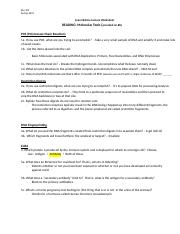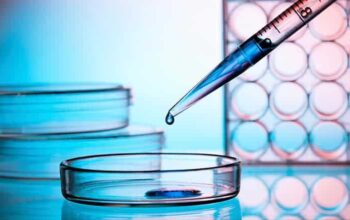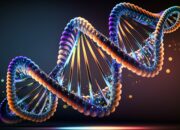The realm of molecular biology has long been characterized by its intricate interplay between complex biological systems and the tools devised to manipulate them. One of the most fascinating advancements in this field is the utilization of DNA and other molecular tools to create nanoscale devices capable of performing intricate tasks traditionally reserved for larger systems. The question is: can we harness the precision of DNA to achieve unprecedented control at the nanoscale, while addressing the inherent challenges this entails?
Often referred to as “DNA tweezers,” these molecular tools have emerged as innovative mechanisms for manipulating nanoparticles, drug delivery systems, and biomolecular interactions. They provide numerous advantages, including high specificity, low energy consumption, and the ability to operate within the complexity of biological systems. However, their implementation poses significant challenges that necessitate careful consideration. As one delves into this subject, it becomes imperative to explore the fundamental principles that govern these technologies, their applications, and the challenges that accompany their use.
At the core of DNA tweezing technology lies the concept of DNA origami. This process involves the design and folding of DNA strands into specific shapes and structures that can perform mechanical work. Using complementary base pairing, researchers can engineer complex 2D and 3D configurations, such as tweezers or gates, which can open and close in response to certain stimuli. The design flexibility inherent in DNA origami allows for the creation of customized systems capable of selectively binding or releasing targets. Such systems can amplify the specificity and efficacy of molecular interactions, making them ideal candidates for a range of applications.
In the context of drug delivery, DNA tweezers can encapsulate therapeutic agents and release them in response to specific biological signals. This mechanism enables targeted treatment, minimizing side effects while maximizing efficacy. For example, a DNA-based nanodevice might remain inert while circulating through the body but release its payload upon encountering a particular disease marker. Nevertheless, the design of such systems requires a thorough understanding of the biological environment in which they operate. Variability in pH, temperature, and the presence of competing biomolecules can influence the performance of DNA tweezers, thus complicating their practical application.
Moreover, the stability of DNA structures in vivo is a critical consideration. DNA is inherently susceptible to degradation by nucleases, enzymes that break down nucleic acids. Thus, researchers must develop protective measures, such as modifications to the DNA structure or incorporating complementary biomaterials, to enhance stability and ensure a reliable function. These modifications can further complicate the design process and introduce new variables that must be accounted for in experimental setups.
Another pivotal application of DNA tweezers lies in the realm of biosensing. By integrating DNA molecules with fluorescent tags, these tools can detect and quantify biomolecular interactions with unmatched sensitivity. A DNA tweezing mechanism can undergo conformational changes upon binding its target, enabling signal amplification through changes in fluorescence intensity. This capacity for precise measurement offers tremendous potential for early diagnosis of diseases, including cancer, by facilitating the detection of minuscule biomolecules in complex biological mixtures. However, the challenge remains: how to ensure the robustness and reproducibility of these biosensors in varied biological contexts.
As researchers continue to explore the boundaries of what is achievable with DNA tweezers, scaling up these technologies presents its own set of challenges. Laboratory demonstrations often operate under ideal conditions, far removed from the multifaceted environment of living organisms. Therefore, translating these nanoscale devices into clinically applicable solutions requires not only rigorous testing but also interdisciplinary collaboration among chemists, biologists, and medical professionals. Such collaborative efforts can lead to innovative strategies for overcoming biological barriers and ensuring that these tools can interact effectively with their targets.
Moreover, the ethical implications of employing molecular tools for manipulation at the nanoscale cannot be overlooked. While the potential benefits are vast—from advancements in personalized medicine to groundbreaking applications in synthetic biology—there must also be an awareness of the potential risks associated with manipulating biological systems. What safeguards should be in place to prevent unintended consequences arising from the use of such precise tools? Addressing this question requires the input of ethicists, policymakers, and scientists working at the intersection of these fields.
In conclusion, DNA tweezers represent a remarkable fusion of molecular biology and nanoscale engineering, unlocking previously unimaginable possibilities for manipulating biological systems. By leveraging the distinct properties of DNA, researchers are poised to revolutionize fields ranging from drug delivery to biosensing. However, significant challenges remain—issues of stability, specificity, and ethical considerations must be diligently navigated. As the quest for molecular precision continues, the playful question persists: can we truly master the nanoscale world of DNA to improve human health and understanding, or will we be perpetually challenged by the complexity of life itself?










